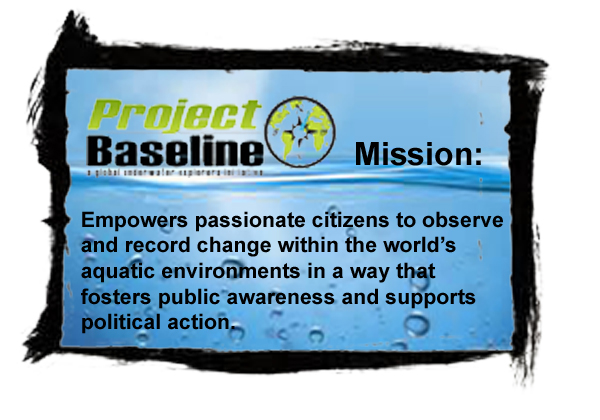Welcome…
Click here to see – Why Project Baseline is so critical to understanding and Protecting Lake Tahoe
Project Baseline: Tahoe will endeavor to share with the public the rich environmental, cultural, historical and maritime history that Tahoe enjoys. Known as the “Jewel of the Sierra”, Tahoe is designated as an Outstanding National Resource Water, which is a special designation under the Clean Water Act, because of its clarity and water quality.
In 2010, we began a focused effort to document the true condition of the lake by reporting strictly on the conditions personally observed while submerged from the beach down to 500 feet; the Nearshore Zone into the Lakezone. Much has been reported as to the efforts of various agencies trying to protect the lake and in some cases there is truth and in other cases denial. Our goal is to provide baseline information and let the public make the ultimate decision as to the progress or regression of Tahoe’s overall clarity. Following is our introductory promotional slideshow:
New Millennium is the “Project Manager” for the Global Underwater Explorers environmental initiative, Project Baseline that functions Globally but is headquartered out of High Springs, Florida. Participating as a Project within this global scheme, NMDE’s focus will be to support in the documentation of Tahoe’s water clarity and environmental conditions in the Nearshore Zone via the Project Baseline platform.
The following video produced by Global Underwater Explorer’s was completed specifically for Lake Tahoe and is a “Historical” and “present time”, personal intrepretation, introduction and explanation of Project Baseline: Tahoe; why this initiative is important to NMDE, Lake Tahoe and more specifically, Northern Nevada and California.
Offsite links to Project Baseline: Tahoe:
Why:
Over 100 years ago, there was a bustling maritime industry alive on the waters of Lake Tahoe. The “jewel of the Lake” was the SS Tahoe but not many remember that she had 3 sister ships; The Nevada, The Meteor and The Emerald. The latter was dry-docked, cut up and sold for scrap. The Bliss family did not want to see this fate befall the remaining three ships so William Seth Bliss, Grandson to DL Bliss (he who commissioned these ships) bought them back from the company that purchased them from his father to protect and preserve them. As time went on, the Bliss family simply did not want to keep pouring money into the maintenance and up-keep of these vessels, maybe thinking the Tahoe community would help, but did not, so the decision was made to one by one scuttle these historical icons and let them rest upon the bottom of the lake they served so well.
With the decision made to scuttle these three ships, first, went the Nevada and then the Meteor. They were laid to rest in the very deepest depths of the lake. However, William Seth Bliss wanted something special for the SS Tahoe; scuttle her in 100 feet off the shores of Glenbrook bay. He thought that this would put the ship in a location where people could see her from a glass bottomed boat! In 1940 do you believe that the lake’s clarity allowed a clear view down to 100ft? Mr. Bliss knowing this, believed he would serve history by making this iconic vessel, named “The Queen of the Lake”, accessible for public viewing; trying to make the best of a difficult situation.
This is the first documented evidence of clarity for Lake Tahoe. At one time, in the Nearshore Zone of Lake Tahoe, one could clearly see down 100 feet or greater into her nearshore depths. Present day in Glenbrook one can see down on average of 40 feet and on a very good day, a day surrounded by some very specific environmental conditions, 50 feet has been observed by Project Baseline: Lake Tahoe divers.
Recently Project Baseline received a request for information and in that request they commented, “All in all during our visit in 2014, we did not see evidence of any deterioration! No compromised water levels, or specific evidence of Tahoe being ‘in trouble’. What is going on that is so bad”?
This comment is described as, “Generational Environmental Amnesia” (GEA). A term coined for this all too commonplace response. It is nearly impossible to document from memory, year to year, the actual physical condition of Tahoe or any aquatic environment for that matter. We see the overall beauty, but not the fading water levels, diminishing visibility or the anthropogenic (human caused) impacts.
Yes! Lake Tahoe is still beautiful but not as beautiful as it was in 1940. Due to GEA, perceivable change can only be seen through written documentation of things like depth, visibility and temperature. This documentation is further supported and the change visually represented by photographic comparisons both above and below water.
This is why Project Baseline is so important. This is what we do; taking our love for diving and supporting the environmental health of Lake Tahoe with our assessments and documentation; citizen science in its purest form.
In July 2011 the lake was 6 feet higher than it is today. In 1940 the horizontal clarity within the nearshore zone was 50 feet clearer. Northern Nevada is in a critical drought scenario that begun several years ago and by September of this year (2015), the lake may drop another 2-3 feet. If we document all of this, take photos and provide information in a very simplistic and understandable manner, we will successfully counteract this GEA and people will accurately see what is happening and hopefully become more involved in Tahoe or their local aquatic environment; as you can see, Project Baseline and specifically Project Baseline: Lake Tahoe is critical to understanding the, unbiased -non-politically motivated, true state of its condition.


